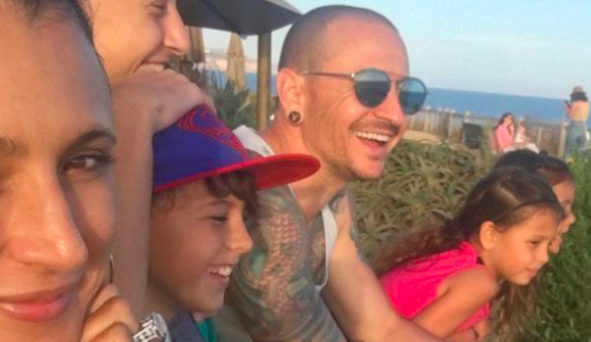Suicide is on the rise in the U.S. Rates in 25 states have increased by more than 30% since 1999, and is now the 10th leading cause of death in the U.S. But it doesn’t just affect those that take their own lives; it can lead to a trail of depression and grief for those they leave behind. It’s estimated that every person that dies by suicide leaves behind at least six or more “suicide survivors”: people that’ve lost someone they care about deeply and are left grieving and struggling to understand why they took their own lives in the first place. When you think about 6 potential survivors, it can last generations.
The Facts.
Suicide can affect anyone, regardless of income, social status, age, race, gender, sexual orientation or geographic location. While it may seem like a person has a great life, including a good job, a great family and lots of friends, appearances can be deceiving. The world is still reeling from the suicides of fashion designer Kate Spade and author, chef, and TV personality Anthony Bourdain, both of whom took their own lives in 2018. Just because someone seems like they “have it all,” they may be dealing with depression behind the scenes.
Spotting a potential attempt at taking ones life can also be problematic. Linkin Park frontman Chester Bennington took his own life, and while open about his battles with addiction seemingly took his own life during a time when everyone thought he was on top of the World. His wife posted a picture 36 hours after his life ended with the caption ‘This is what suicide looks like.’ The World was shocked.

Studies show suicide rates are on the rise in the U.S. In 2017 alone, 47,173 Americans took their own lives, but there were 1,400,000 suicide attempts. It’s estimated that suicide and self-harm injuries cost the U.S. around $69 billion a year in medical expenses and lost productivity.
However, it’s important to remember that these cases often go unreported. While these may be the most accurate numbers we have, experts believe the actual rate of suicide is much higher that what’s being reported.
Who’s at Risk?
Doctors are at the highest risk. In a study from last year, the AMA announced that a Doctor commits suicide on average once a day, more than double the annual average of any other profession. One study found that 50% of all female Doctors surveyed via Facebook met criteria for having a mental disorder, but didn’t want to talk to anyone about it through fear of stigma. The field at the top of the study? Ironically, Psychiatry.
While anyone may be susceptible to suicide, studies show rates are highest in middle-age white men in particular. According to the American Foundation for Suicide Prevention, men died by suicide 3.54x more often than women in 2017. That same year, white males accounted for 69.67% of suicide deaths.
Adults between 45 and 54 years of age face the highest risk of suicide, while those over the age of 85 face the second-highest.
When we break these number down by race and ethnicity, whites have the highest suicide rate in the country, while the second highest rate was among American Indians and Alaska Natives. Rates tend to be much lower among black or African Americans, Pacific Islanders, and Asians.
Furthermore, firearms are responsible for just over half of all suicide deaths, while suffocation and poisoning account for 28% and 14% respectively.
Helping Suicide Survivors Move Forward
Considering 47,173 Americans died by suicide in 2017, the number of survivors in the U.S. continues to grow year after year. Every death from suicide results in an average of six or more suicide survivors, which means there may have been 282,000 new survivors in 2017 alone.
Coping with the death of a loved one is never easy, but dealing with the aftermath of a suicide is a different kind of grief. Suicide survivors may experience trauma or intense grief after losing a loved one, but many of these individuals may not get the help they need. Some may be hesitant to admit their loved died by their own hands, which may stop them from talking openly with friends and family or meeting with a therapist or grief counselor. Keeping the cause of death a secret from friends, family and the larger community can lead to feelings of shame, isolation, betrayal and confusion.
Suicide survivors often face difficult questions and recurring thoughts as to why their loved one decided to take their own life. They may suffer intense guilt for not doing more to save this person’s life, but survivors shouldn’t blame themselves for another person’s decision.
They should know that they can speak privately and confidentially with a mental health professional. If a person is worried about admitting their loved died by suicide, they can find the help they need to make sense of this often-complicated situation.
Suicide support groups have also been shown to be particularly helpful. These support groups are facilitated by mental health professionals. They are there to help everyone feel safe and comfortable in the group. This gives suicide survivors the chance to talk with and hear from other individuals that are going through a similar situation.
If you know a suicide survivor, you can offer to help them find a local mental health professional or support group. You can contact the National Suicide Prevention Lifeline at 1-800-273-8255 for help and more information or visit the American Foundation for Suicide Prevention to find a support group in your area.
While you may not have the tools to help your friend or loved one make sense of this difficult time, you can offer to help with small things like running errands, picking up their kids after school, covering a shift at work, or helping them with cooking and cleaning. It’s all about being there for those in need and showing your loved ones they still have a life to live. Optimism is key, when trauma occurs, the ability to see a way forward is what challenges most subjects. Enabling a survivor, or even someone at risk of suicide what awaits in life, and the potential out there can make a monumental step in recovery. Essentially, giving someone a reason to be excited about the future and living in the present can make a difference.















